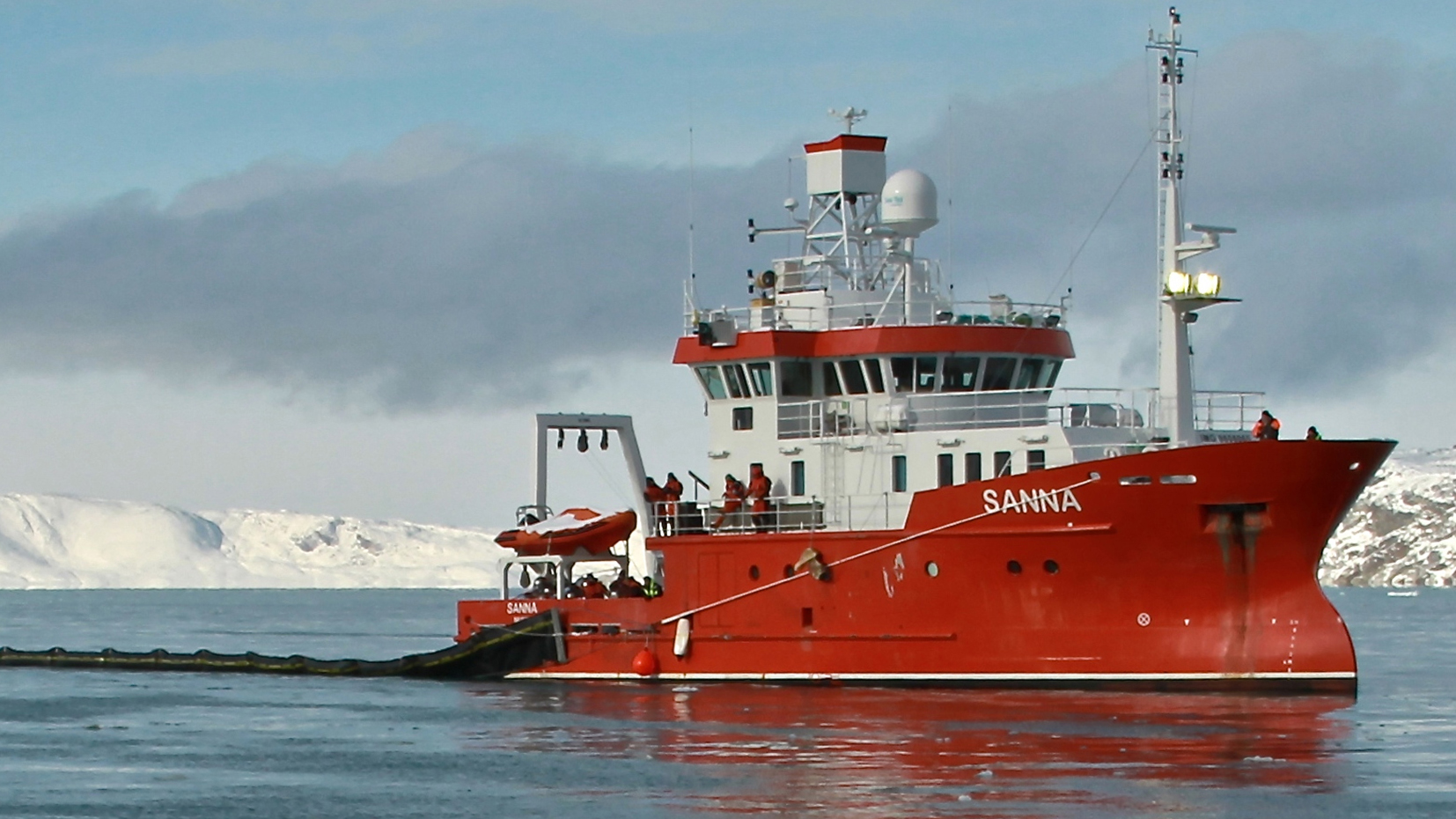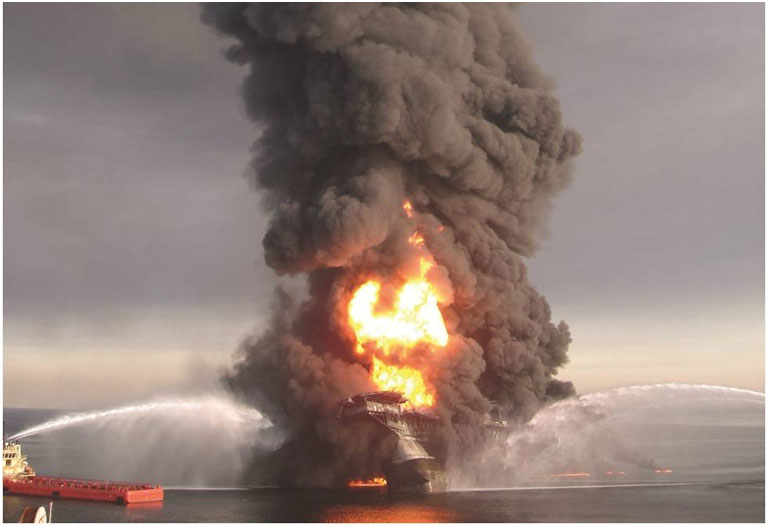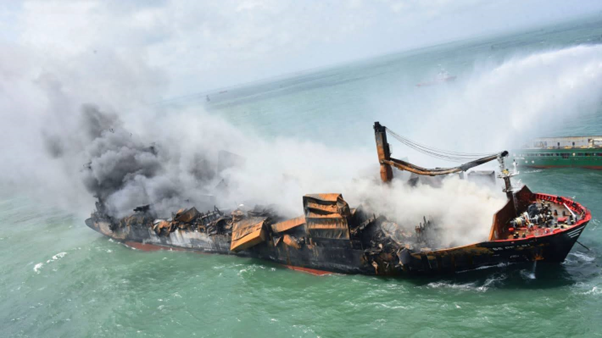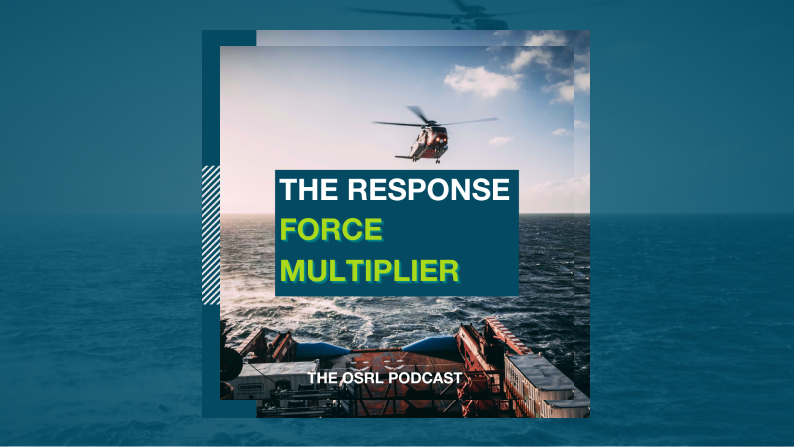Experiences in Developing Cold Weather Response Capability: Offshore, Shoreline & Cold Weather Shoreline Clean-up Assessment Techniques
Purpose and Goals
Building on experience
In March 2016, Oil Spill Response Limited (OSRL) conducted its first offshore cold weather exercise in partnership with Greenland Oil Spill Response (GOSR). OSRL has been developing its cold weather response capabilities for the past four years, providing dedicated in-house responders with the training and experience they need to ensure they know how to work safely and competently should they be called upon to respond to a spill event in cold weather regions.
This training is structured to build up cold weather expertise through the progression of training courses already run externally or established by OSRL as listed below:
-
Swift water rescue techniques
-
Ice rescue and safe working-on-ice techniques
-
Working on ice course
-
Working on ice continuation course
With this training structure in place, OSRL carried out an internal review of its cold weather capabilities and offshore cold weather response was identified as the next logical step in progressing OSRL’s knowledge and experience. This case study provides an overview of the subsequent offshore exercise that took place and the outcomes that OSRL were able to take away from it.
Desired Outcomes
With the exercise location established, the following objectives were put together:
-
To work closely with GOSR and build on the relationship that had already been formed
-
To increase OSRL’s knowledge in cold weather offshore deployments
-
To deploy offshore equipment in a cold weather climate above 60 degrees north
-
To deploy offshore boom in various ice conditions, testing its strength and allowing OSRL responders to gain an understanding of the issues involved whilst operating in a cold weather offshore environment
-
To run a cold weather Shoreline Clean-up Assessment Technique (SCAT) exercise
-
To deploy Ro-Boom 1500 and Desmi PyroBoom from a dockside
-
To carry out a shoreline deployment utilising GOSR’s equipment
-
Testing of new OSRL immersion suits and cold weather adapted power packs and recovery equipment
Offshore deployments were to be the key focus of the Greenland exercise with OSRL shipping a Ro Boom 1500, powerpack and ancillary equipment to Greenland. GOSR also intended to trial a Desmi PyroBoom which coincided with the exercise dates meaning two very different offshore systems were available to be deployed. Working with GOSR also offered other opportunities to further develop the knowledge and experience of the responders attending by introducing other exercise elements including:
- A dockside deployment from Nuuk harbour
- Cold weather SCAT training including both theory and practical shoreline surveys,
- A shoreline exercise to simulate some of the challenges that would be faced during a shoreline impact in a remote cold weather region.
In total, eight OSRL and four GOSR responders attended the exercise together with representatives from local government authorities; The International Tanker Owners Pollution Federation (ITOPF) and Desmi also viewing the offshore and dockside elements.
Why Greenland?
With cold weather offshore capability highlighted as the next area to develop, a suitable location to hold such an exercise needed to be found. Three locations were considered:
-
Norway in partnership with Norwegian Clean Seas Association for Operating Companies (NOFO)
-
Nuuk, Greenland in partnership with GOSR
-
St Laurence River, Canada in partnership with East Canada Response Corporation (ECRC)
After scoping out each option it was decided Greenland would make the best exercise location. To the north of Nuuk in the fjord systems, there was reliable ice of various types and more importantly, reliable deployment conditions within a four-hour sailing time. Once it was confirmed that GOSR were happy to support the exercise, OSRL put together an offshore equipment package which was shipped to GOSR’s base in Nuuk in preparation for the exercise.
The Timetable
After considering the objectives and leasing with GOSR, an eight-day exercise timetable was drawn up starting on March 13, 2016.
Exercise Execution
Day 2 – Ro Boom 1500 Deployment
Day 3 – Desmi PyroBoom Deployment
Day 4 – Ro Boom 1500 Dockside Deployment
Day 5 – Cold Weather SCAT Theory And Practical
Day 6 – Shoreline Deployment
Exercise Challenges
Offloading Complications
Upon returning to Nuuk after the two days offshore the Sanna, our deployment vessel, was unable to dock starboard side due to high winds and propulsion issues that developed during docking. As a result a Hiab with a reach in excess of 16m capable of lifting 3.5t had to be sourced at very short notice.
Vessel Breakdown
The Minna Martek which was to be the offshore tow vessel and later accommodation for the SCAT and shoreline exercise, fouled its prop on sea ice the day before we departed for the offshore elements. GOSRs local contacts were able to source a replacement vessel by 0830 the next day prior to our departure from Nuuk.
Exercise Outcomes
Ro Boom 1500 deployment
With light snow falling during the deployment, the deck and Ro Boom reel framework became slippery underfoot, highlighting the importance of keeping the deck clear of any snow build up. The spindle of the boom reel also lost some friction, meaning extra wraps of the control line were needed during deployment and recovery stages. All the OSRL responders wore Helly Hansen Sea Work Suits, which worked well, however some suffered from cold feet due to the steel deck conducting heat away. Insulating over boots are currently been sourced to alleviate this issue. First year sea ice was contained within the boom, estimated at 100 tons. The boom deformed a little as it picked the ice up, but by reducing the vessel speed, it soon regained its original shape.
Desmi PyroBoom deployment
Being a solid flotation boom, it was bulky, a little heavy to manhandle and took up a significant amount of deck space. Once flaked out, deploying the boom was very straight forward. Designed as a one use item, the PyroBoom did make the recovery process challenging with the boom having to primarily be dragged back on deck with the on-board Hiab. Having a rear roller deck would have also aided this recovery process. Everyone present found the deployments very useful as such systems provide the only practical means to carry out in-situ burning in cold weather regions with the exception of herders.
Ro Boom 1500 dockside deployment
Due to the Sanna offloading complications, only a Ro Boom deployment was possible. However this deployment ran very well. A 20ft Lancashire Flat Rack was used as a deployment platform to which the Ro Boom reel was chain lashed. This arrangement proved very stable and is something OSRL
would promote in any future dockside deployments of offshore boom. Both OSRL and GOSR responders oversaw various stages of the deployment and recovery process. As with any deployment from a fixed structure in a tidal area, the recovery process of mainly keeping the boom square to the reel is always challenging. Drawing upon the experience of the individuals present and clear regular communication with the vessel, the challenge of manning the seaward end of the boom was successfully overcome. The exercise also presented the opportunity for GOSR staff to direct vessels of opportunity in manoeuvring the deployed boom through various turns and formations.
Cold weather SCAT theory and practical
This training allowed OSRL to compare its SCAT survey form with other cold weather survey forms which will influence
future SCAT form formats. The exercise location, selected by GOSR, proved very diverse in terms of ice and shoreline types encountered. The morning comprised of a three-hour boat trip to site during which SCAT refresher training was delivered. This was followed by an afternoon onsite which allowed everybody to gain a detailed understanding of the various challenges
that come with working shore-side in cold weather climates. Examples include gaining safe access to the shoreline, being able to read the terrain and move through it safely as well as being able to understand a beach profile that is often hidden by ice and snow. The use of spot trackers and satellite phones were also successfully trailed to allow the survey team to communicate with each other and enhance safe working.
Shoreline deployment
This was carried out close to the SCAT site using equipment provided by GOSR. The shoreline boom was successfully
and safely deployed from the vessel. It was then towed to the shoreline by a rib and arranged in a horse shoe formation. Beach flushing operations were carried out to replicate the remobilisation of stranded oil. OSRL responders also tested the Helly Hansen Sea Work suits in the shallow water of the bay. This proved to be a very positive exercise and instilled confidence in the suits ability to perform its function well in the undesired and unlikely event someone should find themselves overboard.
Future Work
OSRL repeated this exercise in March 2017, building on what was achieved during the 2016 exercise outlined in this case study.
OSRL is committed to developing and building upon existing relationships with other Oil Spill Response Organisations to further develop cold weather response knowledge, expertise and the global capacity to respond.














